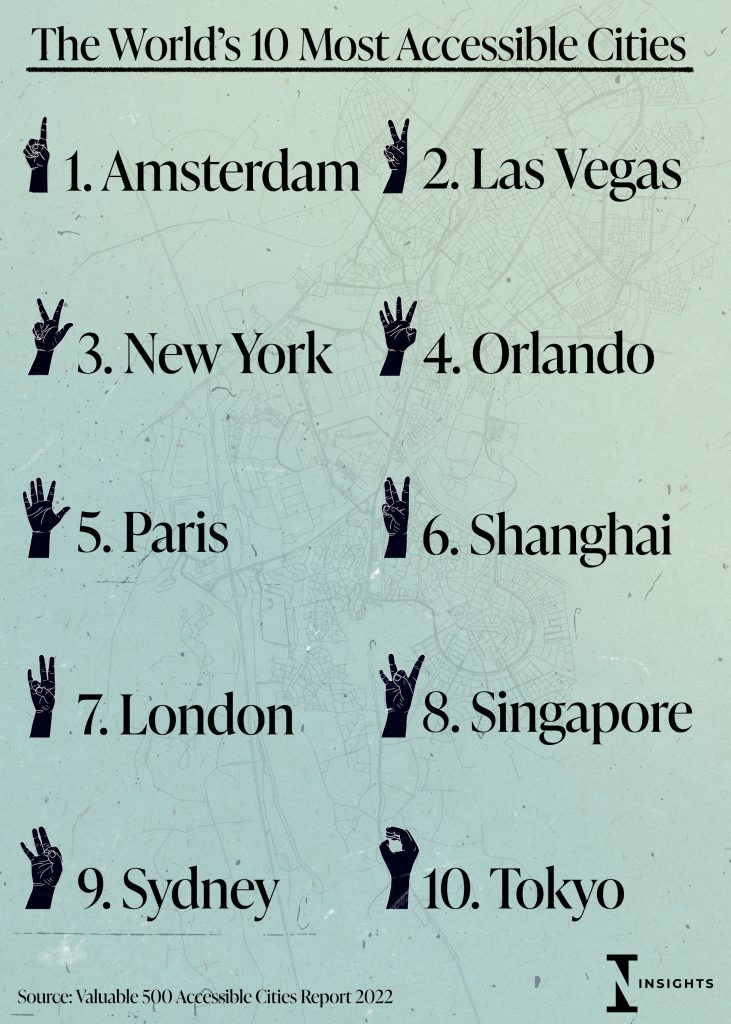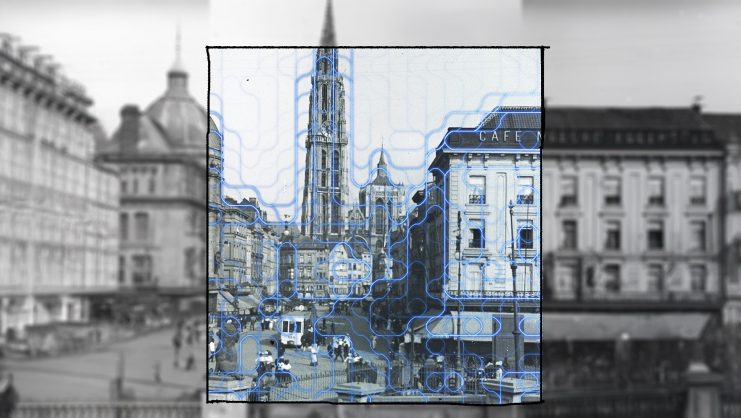As our society begins to understand the importance of equity and inclusion, the concept of an accessible city has been developed to ensure that all residents and visitors are able to use and navigate their physical surroundings with ease. An accessible city is one that has been designed and developed with the aim of providing equal opportunities and a seamless experience for all its residents, regardless of their physical or neural abilities. While no city can truly be fully accessible, as access needs are far too wide-ranging and diverse, there are several that deserve praise for their conscious efforts to include all of its citizens. Ten cities—Amsterdam, Las Vegas, London, New York, Orlando, Paris, Shanghai, Singapore, Sydney, and Tokyo— were voted as the “most accessible” in a survey from the Valuable 500, in which 3,500 disabled people were surveyed on which city they believed to be best accommodated to their needs.
Accessibility in cities extends far beyond the use of wheelchair ramps and tactile paving; it encompasses a holistic approach to urban planning that considers the diverse needs of its citizens. Physical accessibility is crucial, ensuring that public spaces, transportation, and buildings are designed to accommodate individuals with mobility challenges. While eliminating architectural barriers, sensory inclusivity must also be prioritized, recognizing the diverse range of disabilities that individuals may experience. This involves incorporating features such as audio signals at pedestrian crossings, braille signage, and tactile maps, ensuring that people with visual or auditory impairments can navigate the urban environment with confidence. Beyond the physical and sensory realm, information accessibility is equally vital. In the digital age, cities need to ensure that information about public services, transportation schedules, and events are readily available and easily accessible to everyone.
The benefits of accessibility in cities extend far beyond the disabled community. An accessible city is inherently more livable for all its residents. Imagine for a moment a parent pushing a stroller, an elderly person with reduced mobility, or a tourist with language barriers—all these individuals benefit from the inclusive features of a city, whether physical, sensory, or informational. The infrastructure of an accessible city does not only impact the fabric of the city but also the community and social network of it, fostering a culture of inclusivity and awareness. As the report author Martin Heng highlights: “The importance of being treated with respect, and how a greater understanding of disability and the needs of people with disabilities can be as important as accessible infrastructure.”
An accessible city is a testament to a society’s commitment to equity and inclusion. The recognized cities still need to improve their accessibility, but can serve as role models for urban development, demonstrating that accessibility is not just a legal requirement but a fundamental aspect of building thriving, interconnected communities. As other cities look to enhance their accessibility, they can draw inspiration from the successes of these 10 cities in creating urban spaces that leave no one behind.
© IE Insights.












